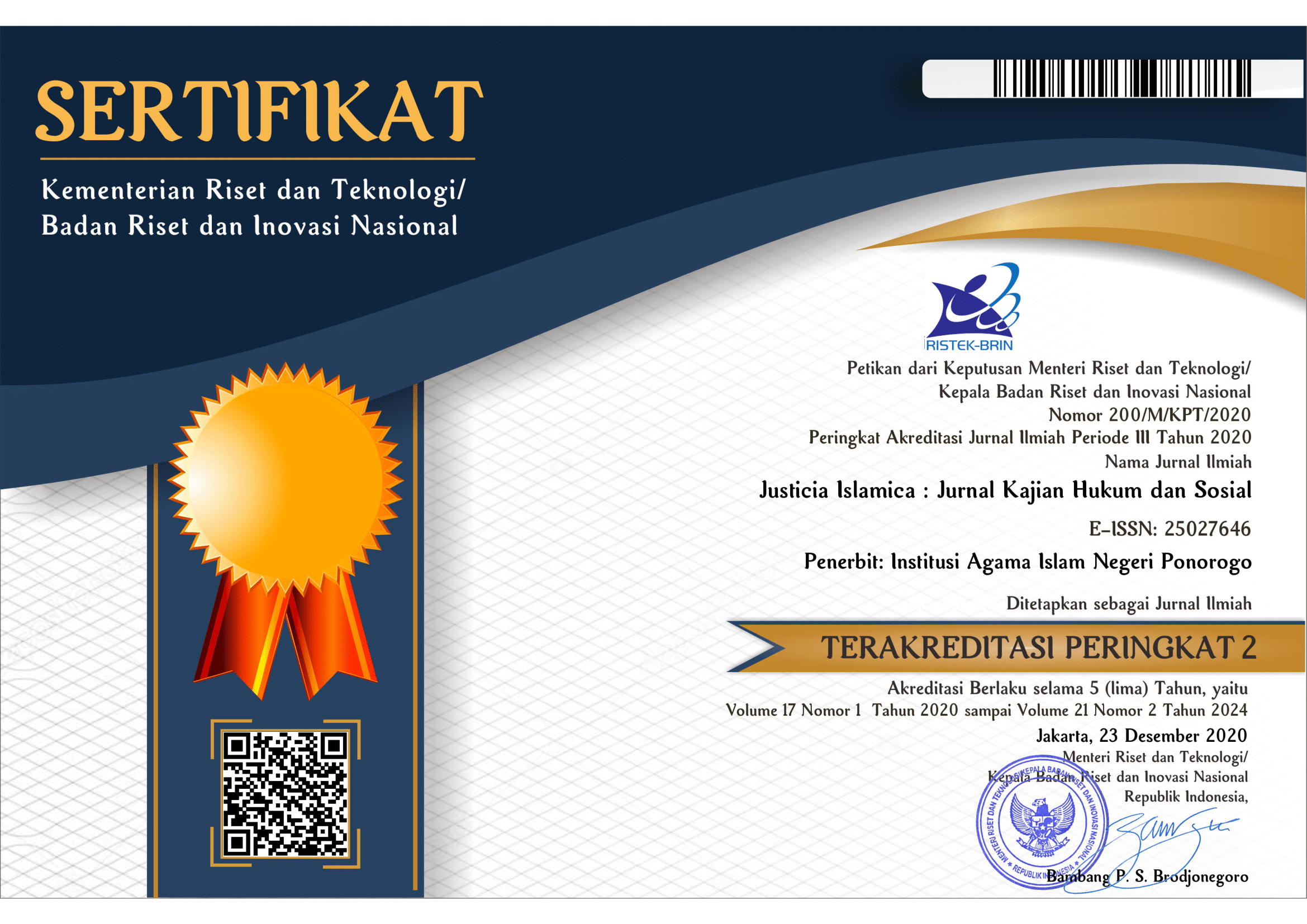Kontekstualisasi Hukum Islam
Telaah atas Pemikiran Hukum KH. MA Sahal Mahfudz
Keywords:
KH. MA Sahal Mahfudz; social fiqh; ijtihad.Abstract
This study aims to analyze the Islamic legal thought of KH. MA Sahal Mahfudz in the context of Islamic legal reform relevant to social development. KH. MA Sahal Mahfudz is known for his approach of balancing text (nash) and context in applying Islamic law. This study uses a qualitative method with a literature study approach, examining his works and thoughts, especially related to social fiqh. The results of the study show that KH. MA Sahal Mahfudz's thinking emphasizes the importance of contextualizing Islamic law so that it remains relevant to changing times without losing its shar'i values. Through the maqashid sharia approach and the contextual ijtihad method, he offers a formulation of Islamic law that is more responsive to social realities. His thoughts contribute to the development of dynamic fiqh, especially in social issues and Islamic legal policy in Indonesia.
References
.
Downloads
Published
Issue
Section
License

This work is licensed under a Creative Commons Attribution-ShareAlike 4.0 International License.
Requirements to be met by the author as follows:
- Author storing copyright and grant the journal right of first publication manuscripts simultaneously with licensed under the CC BY-SA allows others to share the work with a statement of the work's authorship and initial publication in this journal.
Authors can enter into the preparation of additional contractual separately for the non-exclusive distribution of a decadent version of the journal issue (e.g., post it to an institutional repository or publish it in a book), with the recognition of initial publication in this journal.
Authors are allowed and encouraged to post their work online (e.g., in institutional repositories or on their website) before and during the submission process because it can lead to productive exchanges and citations earlier and more severe than published works. (see The Effect of Open Access).
This work is licensed under CC BY-SA.


















